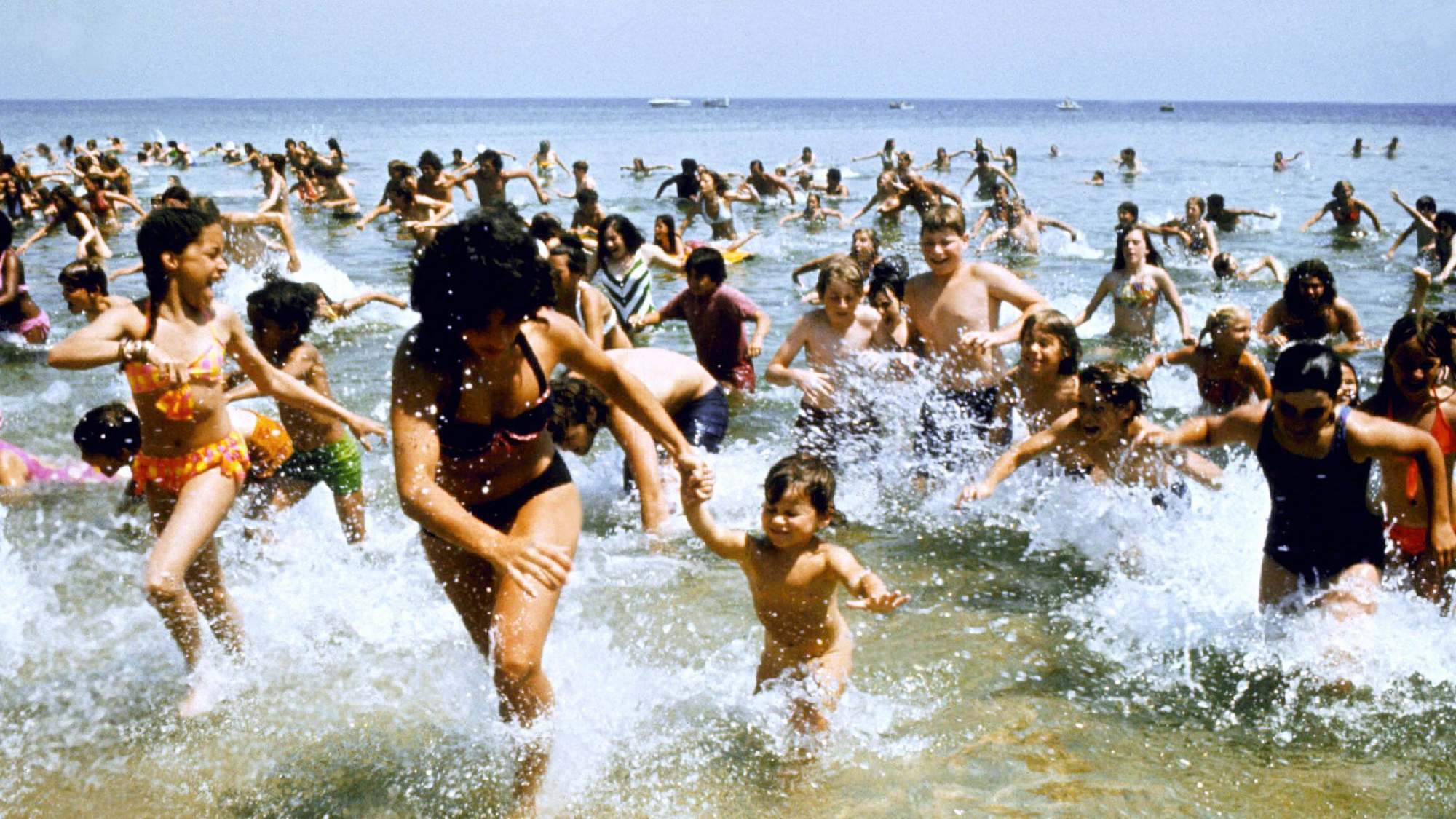‘Jaws’ 50th anniversary: How everything going wrong made the film a classic
Chaos behind the scenes became Steven Spielberg's greatest advantage

The opening scene of "Jaws" is as iconic as its theme music. A young woman goes for a swim in the waters of Amity Island late one night. Then, suddenly, she’s yanked under by a creature hiding beneath the surface.
That shadowy killer was enough to make a generation of movie fans think twice before wading into the ocean — the terrifying shark reveal in the film’s final act didn’t help either — but the entire scene was almost completely different.
The original script for Steven Spielberg’s monumental blockbuster "Jaws," based on the book by Peter Benchley, called for the film’s bloodthirsty great white shark to emerge from the water in the very first scene. But when production on the movie began, there was just one problem: The shark wasn’t working.
So Spielberg and his crew improvised. The result was an opening shot that built tension and terrified audiences without giving away the big reveal.
Near-constant technical issues with the mechanical sharks custom-built for "Jaws" were just one of many issues that plagued the infamous production. But through a mix of movie magic, quick thinking, and dumb luck, Spielberg and the cast and crew managed to create a classic movie that changed Hollywood forever when it premiered in theaters 50 years ago, on June 20, 1975.
What went wrong on 'Jaws'
"Jaws" was troubled from the start. Producers Richard D. Zanuck and David Brown bought the rights to the movie adaptation before the book was even released, after reading it in one night. Brown later joked that if he’d read "Jaws" twice, he would have had second thoughts. Some of the scenes imagined by Benchley were nearly impossible to bring to life on film.
Spielberg later came on board as director after spotting the script on a desk during a meeting (the original director was fired for repeatedly calling the shark a whale by mistake). Spielberg also tried to quit early on out of fear he’d be pigeonholed into making action movies, and the studio had to strong-arm him into sticking around.
Get instant access to breaking news, the hottest reviews, great deals and helpful tips.
Once the script was finished and the main roles were all cast, Spielberg made perhaps his most notable mistake: He decided to shoot the movie on an actual beach. This led to countless issues. Seawater regularly damaged the equipment, locals would sometimes sail into frame and the boat where the movie's’ final act takes place even started to sink at one point while the cast and crew were on it.
Despite all this, when Spielberg looked back at the experience a few days after the film’s release, he seemed confident he’d made the right decision.

"I could have shot the movie in the tank or even in a protected lake somewhere, but it would not have looked the same," the director told Time.
Then, there was the shark. Nicknamed “Bruce” (for Spielberg’s lawyer Bruce Ramer), the great white actually consisted of three different mechanized creatures designed to be filmed from different angles. Bruce broke down constantly, in part due to corrosion caused by the salty ocean water. It also got tangled up in seaweed more than once.
Behind the scenes, crew members referred to the film as “Flaws.” In the end, Jaws wound up both over budget and behind schedule. It cost $9 million, up from an initial $4 million, and while filming was supposed to take 55 days, it lasted 159 days instead.
And yet, "Jaws" went on to become one of the successful movies of all time. The reason why may have a surprising amount to do with what went wrong.
How those flaws made 'Jaws' a success
Issues with Bruce the shark wound up making "Jaws" even better. Beyond the film’s opening scene, it forced Spielberg to find other ways to build a sense of fear without just showing the great white in all its glory. For example, the recurring image of a fin cutting through the surface of the water, which went on to become even more memorable than the shark itself.

“The shark not working was a godsend. It made me become more like Alfred Hitchcock than like Ray Harryhausen,” Spielberg told Ain’t It Cool News in 2011. (Harryhausen was an animator and special effects creator known for fantastical movies like Jason and the Argonauts.)
“The more fake the shark looked in the water, the more my anxiety told me to heighten the naturalism of the performances.”
Production delays also gave Spielberg and his writers a chance to continuously improve the script throughout filming. And the choice to shoot on location on Martha’s Vineyard prompted the director to hire locals for most of the minor roles, adding to the movie's realism even further.
Ultimately, no one thing makes "Jaws" a great movie. From the character work to the tense build-up to the epic mechanized shark itself, it all comes together to create a perfect movie that still holds up to this day. And 50 years later, the behind-the-scenes stories reveal that even when everything goes wrong, it’s still possible to make cinematic history.
"Jaws" is currently streaming on Peacock.
More on Tom's Guide
- 5 classic summer blockbusters just landed on streaming — and they'll make you feel like a kid again
- 5 best underwater thrillers to watch right now
- 35 summer movies we can’t wait to see in theaters, Netflix and more

Jacob Kleinman is a writer and editor with over a decade of experience. He has a background in entertainment journalism but also covers video games. Alongside Tom's Guide, he has also contributed to sites like Newsweek and TechnoBuffalo and recently served as the Executive Editor at Inverse.
You must confirm your public display name before commenting
Please logout and then login again, you will then be prompted to enter your display name.

